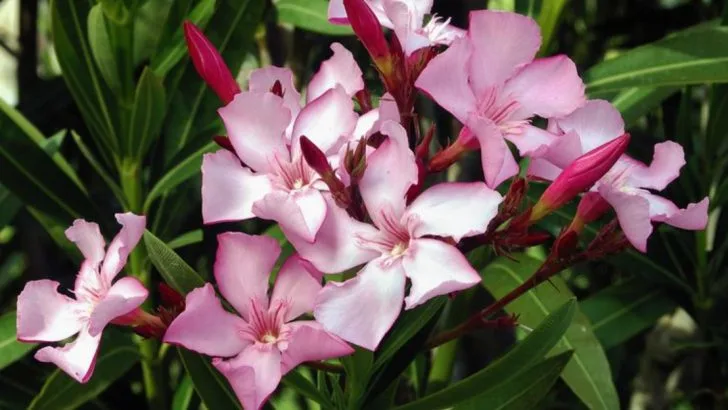Just because a plant is beautiful doesn’t mean it’s safe to touch. While hiking through national parks, it’s easy to be drawn to striking blooms, lush foliage, or unique textures. But behind that beauty, some plants hide serious irritants, toxins, or painful defenses that can leave you itching, burning—or worse.
Many of these plants are protected species, while others are simply dangerous. Touching them can damage the plant, harm local ecosystems, or result in rashes, blisters, or even hospital visits. And in national parks, where the flora is often wild and untouched, it’s especially important to admire from a distance.
Poison Ivy

The sight of poison ivy’s glossy, trifoliate leaves might tempt an unwary hiker, yet beneath its inviting appearance lies a troublesome secret. This plant is infamous for causing skin irritation, often resulting in an itchy, blistering rash. Recognizing its “leaves of three” structure is crucial for avoiding an itchy encounter.
Native to North American forests, poison ivy thrives in shaded areas, blending seamlessly with other vegetation. Its oils are potent and can be transferred to skin or clothing, so it’s best to admire from afar.
Fun fact: Even in winter, touching the bare stems can still lead to a rash.
Giant Hogweed

Giant hogweed stands out with its impressive height and striking flower clusters. However, this beauty harbors a dark side. Contact with its sap can cause severe skin burns and increase sensitivity to sunlight.
This towering plant can reach up to 14 feet, making it hard to miss in open spaces. Its phototoxic sap is a serious concern for those who come too close.
Although alluring, a wise explorer maintains a respectful distance. Interesting note: Giant hogweed was originally imported from Asia as an ornamental plant.
Stinging Nettle
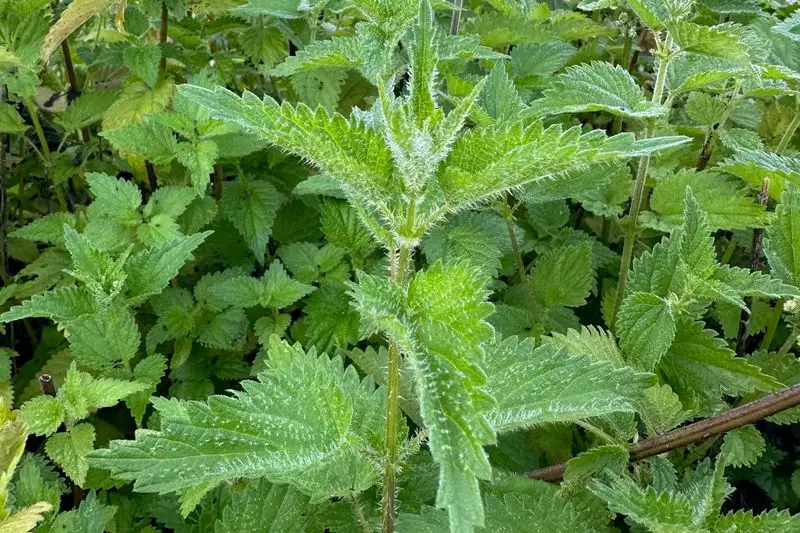
Stinging nettle’s unassuming leaves conceal a painful surprise. Covered in tiny, hair-like structures, a brush against this plant releases histamines and other chemicals that cause a stinging sensation and itchiness.
Frequently found in moist, rich soils, this plant is common along trails. Its sting is temporary but memorable, urging outdoor enthusiasts to give it a wide berth.
Despite its sting, nettle is valued for its nutritional properties in herbal medicine once properly processed.
Poison Oak
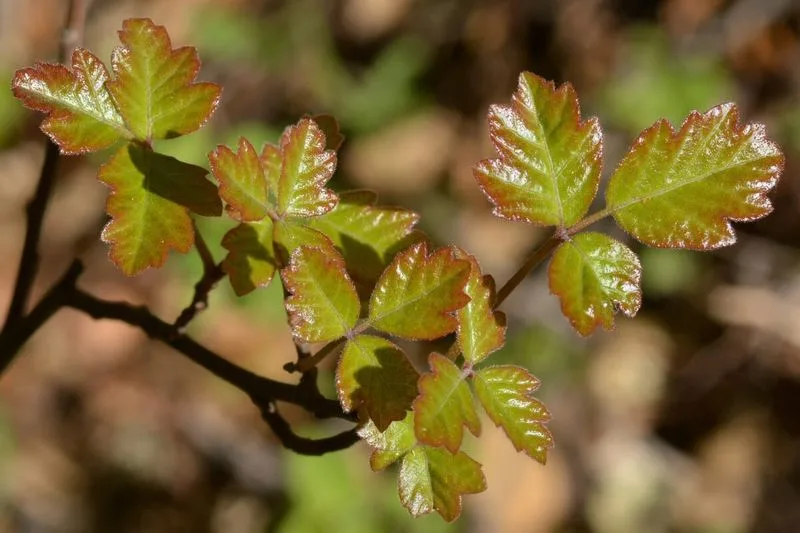
The lobed leaves of poison oak may catch the eye with their vivid fall colors, but contact is best avoided. Like poison ivy, it contains urushiol oil, responsible for causing itchy and blistering rashes.
Thriving in both woodland and coastal regions, this plant often masquerades as part of the underbrush. Recognizing its varied forms, from shrub-like to climbing vines, is essential for safety.
An interesting twist: Poison oak changes color throughout the seasons, adding to its deceptive charm.
Cow Parsnip
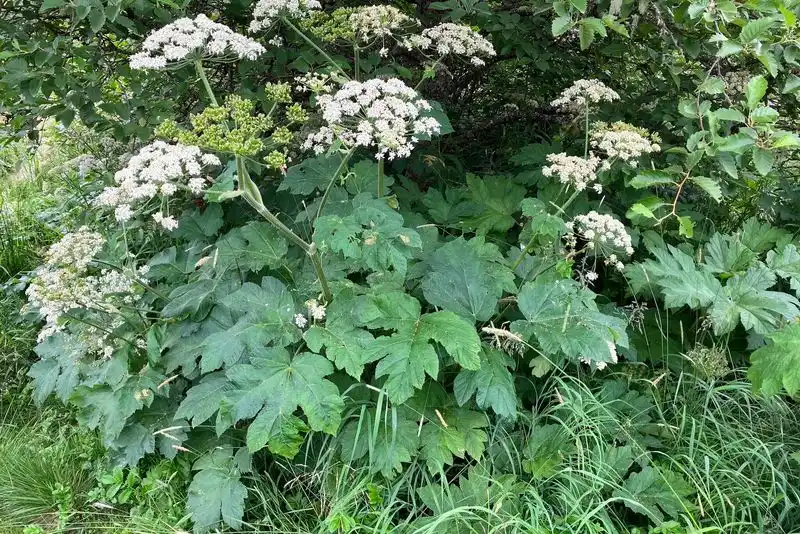
Cow parsnip’s broad leaves and towering white flowers are a sight to behold, yet caution is advised. Contact with its sap, like giant hogweed, can cause photosensitive skin reactions.
This plant is a native counterpart to its more infamous relative, giant hogweed, and can be found across North America. Its ability to cause skin irritation makes it a plant to appreciate from a distance.
Tip: Its flower heads are similar to Queen Anne’s lace but significantly larger.
Oleander
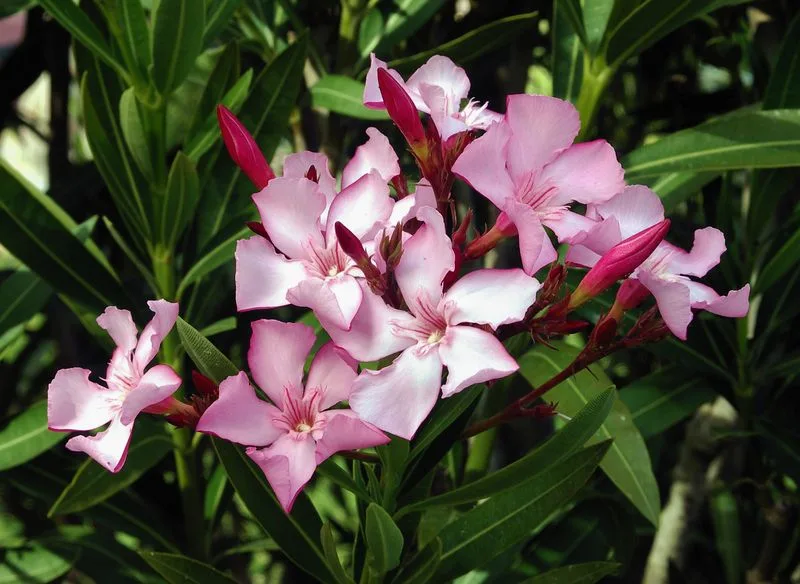
Oleander’s delicate, fragrant flowers are undeniably beautiful, yet every part of this plant is highly toxic if ingested. Even inhaling smoke from burning oleander can pose serious health risks.
Usually found in warm climates, it is both an ornamental and a potentially deadly plant in national parks. While its flowers enchant, wise visitors will admire without touching or tasting.
Educational tidbit: Oleander has been used in traditional medicine, but its toxicity requires cautious handling.
Poison Hemlock

Poison hemlock might resemble a harmless wild carrot, but its toxic reputation is well-earned. All parts of this plant are poisonous, posing a risk to both humans and animals.
Typically found in moist environments, such as along riverbanks, it can grow up to eight feet tall. Its white flower clusters and fern-like leaves can be deceptively charming.
Did you know? Poison hemlock was historically used as a method of execution, most famously for Socrates.
Monkshood
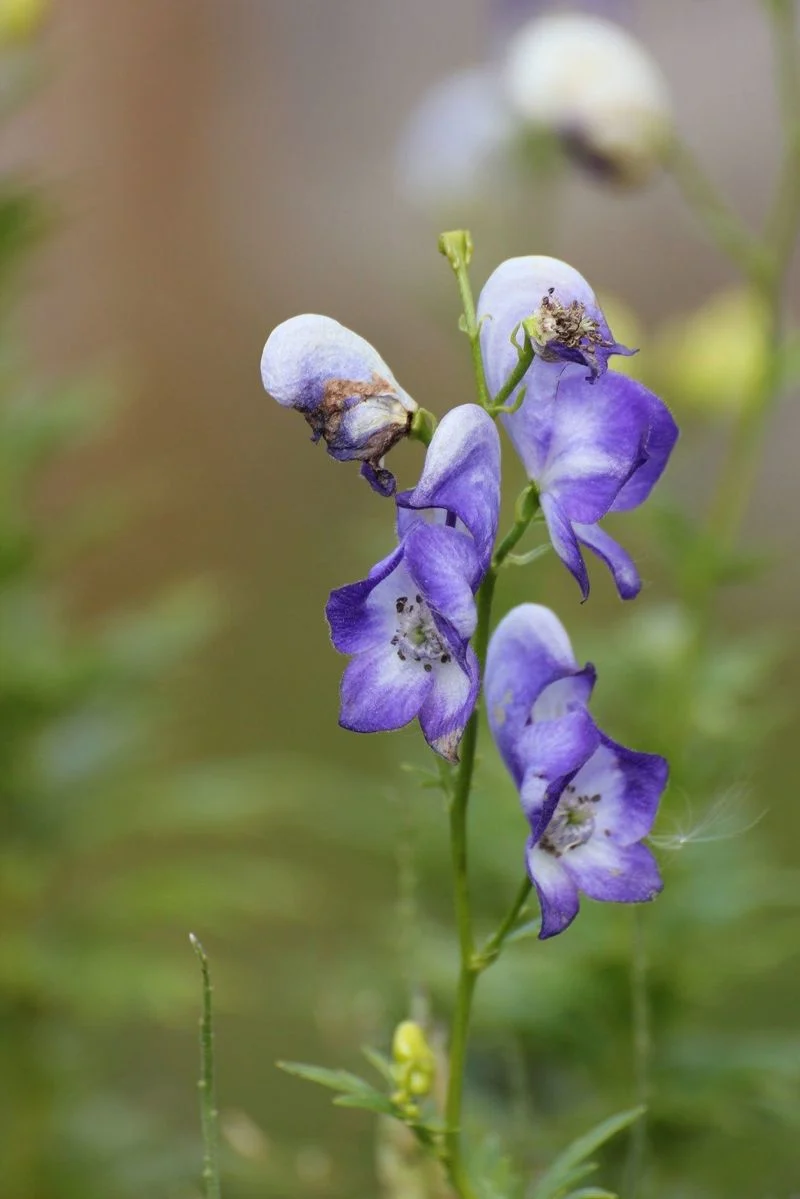
Monkshood’s deep blue flowers, resembling a monk’s cowl, are visually captivating but conceal a potent toxin. Known as one of the most poisonous plants in North America, even small amounts can be deadly if ingested.
This plant thrives in mountainous regions and wet meadows. Its enchanting blooms might lure the curious, but informed hikers know to admire its beauty from a respectful distance.
Historical note: Monkshood was used in ancient times for poison-tipped arrows.
Water Hemlock

Water hemlock, akin to poison hemlock, is one of the most toxic plants. Its intricate white flowers are often found near water, drawing attention to its deceptive beauty.
The entire plant, especially the roots, contains dangerous toxins that can be fatal if consumed. Its presence near streams and wetlands makes recognition vital for safety.
Quite the fact: Water hemlock’s toxins can affect the central nervous system, causing severe symptoms even in small doses.
Foxglove
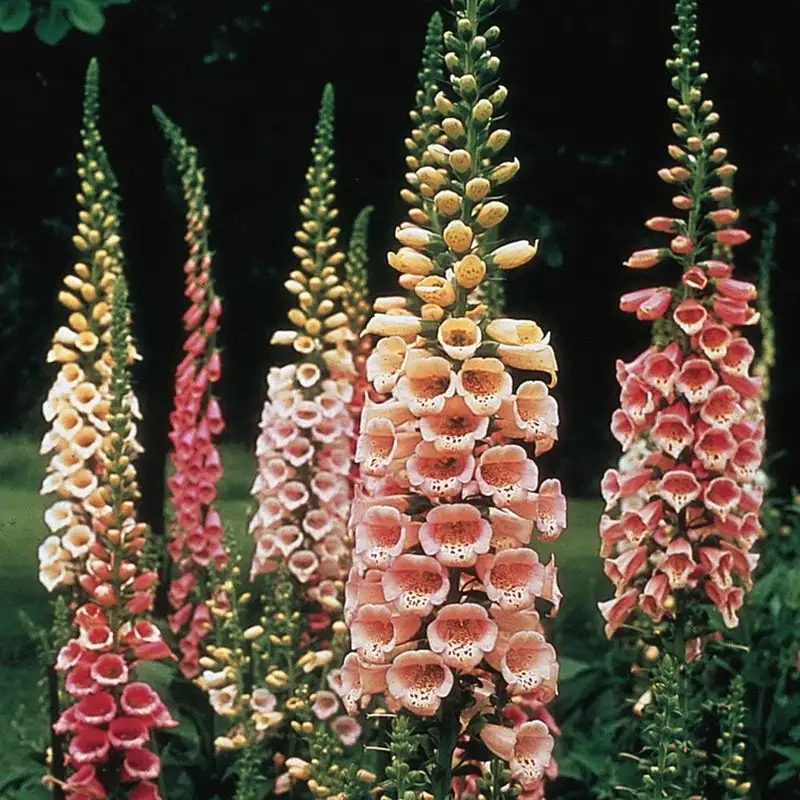
Foxglove’s tall spikes covered in bell-shaped flowers add a splash of color to many landscapes. Despite its charm, foxglove contains digitalis, a potent heart-affecting compound.
Common in woodland clearings, its beauty belies its potential danger if ingested. This plant’s historical use in heart medicine contrasts with its toxic nature when mishandled.
A fascinating tidbit: Foxglove inspired the development of digitalis drugs, crucial in treating heart conditions.
Jimsonweed
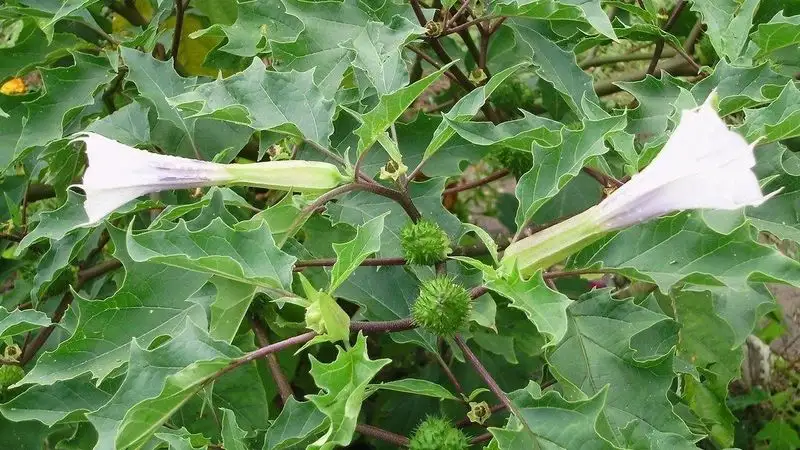
Jimsonweed’s striking white flowers and distinctive spiny seed pods can intrigue explorers. However, its toxicity, affecting the nervous system, is well-documented.
This plant can grow in disturbed areas and fields, displaying a hardy nature. Its psychoactive properties have historical significance but are dangerous if improperly handled.
Did you know? Jimsonweed has been associated with hallucinations and delirium, making it a plant to admire with caution.
Castor Bean
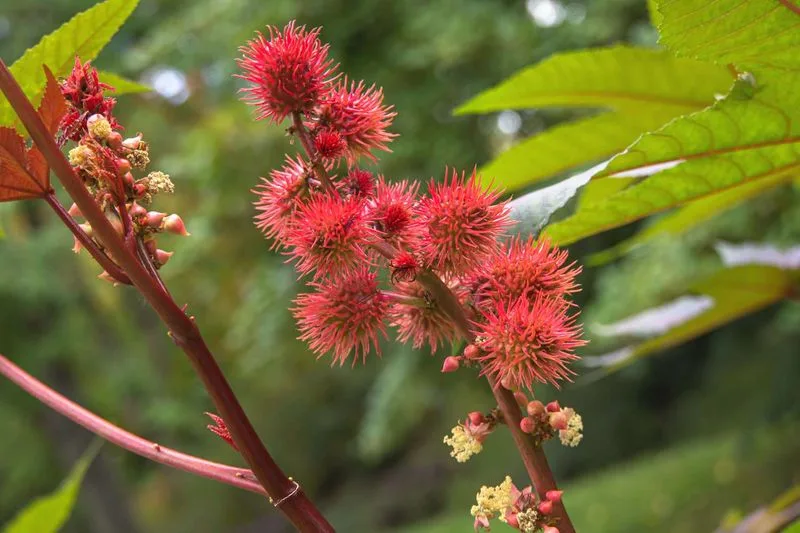
The castor bean plant, with its glossy leaves and vibrant seed pods, captivates the eye but contains ricin, a potent toxin. Ingesting even a small amount can be fatal, making it one of the most dangerous plants.
Although often grown for ornamental purposes, its seeds require careful handling to avoid accidental poisoning. The plant’s striking appearance belies its deadly potential.
Interesting fact: Castor oil, derived from the seeds, is safe and widely used, unlike the toxic raw seeds themselves.
Belladonna

Belladonna’s dark, glossy berries and star-shaped flowers are visually alluring, yet deceptively deadly. All parts of this plant are toxic, with berries posing particular risks to children.
Found in woodlands and along shaded paths, its historical use in cosmetics and medicine contrasts with its deadly reputation. Caution is key when admiring its beauty.
Quirky fact: Belladonna was once used in eye drops to dilate pupils, enhancing beauty at a dangerous cost.

